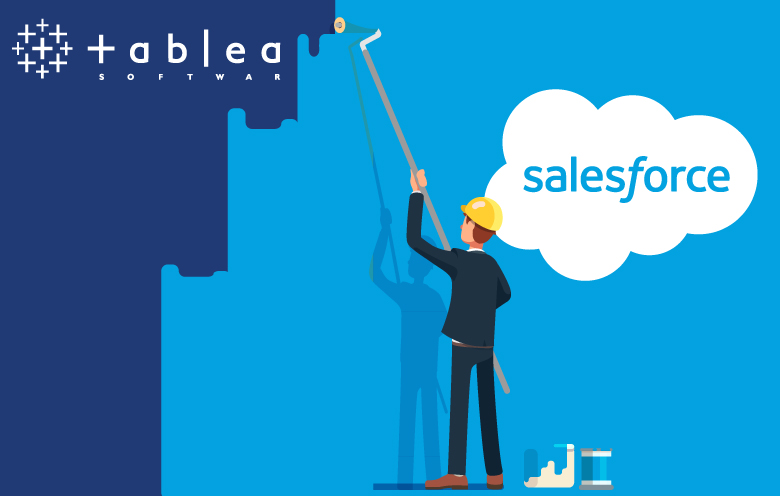
Sep 21, 2020
It has been a while since Salesforce – the market-leading CRM platform acquired Tableau. Though this merger brought the capabilities of both tools together, it also left many organizations wondering in surprise. Industry experts are keen to understand how this merger influences their business intelligence (BI) strategies.
- Whether or not Tableau will remain the same?
- Will the Tableau users be force-fitted into some cloud models?
- How will Tableau’s innovation pace be affected?
And it was obvious to think along the same lines since both tools were extensively used by many organizations to enhance their day-to-day activities. Through this blog post, we bring you the nitty-gritty of Tableau’s integration with Salesforce.

Let your data tell your business story with Tableau
Webinar agenda
- Overview of Tableau and integrations
- Various data visualization trends
- Must have data analytics trends in 2021
- Use cases and live demo
- Present day examples/ case scenarios
- Q & A
Salesforce and Tableau: Two powerful tools walk hand in hand
An open mind is all it takes to look at the bright side of this acquisition. Salesforce has revolutionized customer relationship management with its innovative accomplishments in the Tableau cloud. Furthermore, it is believed that migrating to Tableau adds a charm with its simple-to-configure features and easy-to-implement functionalities. Such advancements enable enterprises to flexibly manage customers, monitor marketing and sales leads, and establish collaboration between internal departments, all powered by Tableau Server.
Let’s acknowledge that Tableau integration services simplify the ability to use analytical power to obtain a deeper understanding of data, which is an area of core interest for many businesses.
What are the advantages of embedding Tableau in Salesforce and how it can help you make better decisions for your business?
1. Experiencing the power of CRM Analytics
Not just smart analytics, but it is CRM Analytics that we are talking about. CRM Analytics enables you to leverage fully native analytics for your workflows. As a result of which you can work more efficiently, stay relevant to marketing trends, predict sales outcomes, and prepare for the next course of an action plan. Moreover, you also gain access to AI models that are easy to set up, requiring absolutely no coding skills. You can plan and start to leverage Salesforce Einstein implementation for day-to-day business operations.
2. Visualize and explore Salesforce data in Tableau
With integration services with the Salesforce database, you can take advantage of Tableau data visualization capabilities to improve operational efficiency. This gives you an accurate insight in a readable format that matters the most to your organization. Moreover, interactive visual analysis enables you to make data-driven decisions for better sales prospecting, lead management, process coverage, account management and more.
And that is not all, you also have Tableau dashboards designed to help you get the ball rolling with actionable data analytics. It offers you the ability to instantly customize and create data-rich visualizations for specific purposes, including account tracking, quarterly performance reports, top accounts and more in just a few clicks.
3. Faster decision-making
Businesses generate incredibly valuable data through their operational processes that are often locked up in silos. But when you integrate Tableau with Salesforce, you unlock the data that gets built up in the pipeline and break free of those barriers in minutes.
The good news is – there is no longer a need to spend time extracting data from the Salesforce platform and separately share it to Tableau manually. The integration of both tools does that automatically for you and provides you with deep insights from every department of your organization, empowering you to make faster and smarter decisions for your business growth.
4. Increased Tableau innovation
Be rest assured with Tableau’s innovation aspects, as it is in the good hands of Salesforce. Tableau now has direct access to more resources and a large customer base of Salesforce. This means you can expect a feature rollout.
Additionally, Tableau dashboards in the Salesforce platform are likely to become a norm for Salesforce customers, therefore, Salesforce will now have a bigger audience using Tableau applications. Also, embedding Tableau dashboards in the Salesforce platform would increase demand for Tableau consulting, training and development work.
Achieving the best of both worlds
The combining power of Tableau and Salesforce is expected to play a greater role in driving digital transformation and empowering global businesses to tap into the data to get deeper insights for making smarter decisions. Here are a few approaches for your IT team to consider and achieve the best of both worlds:
- Utilize Salesforce CRM Analytics tool to know which prospects to target, which territories to align, which cross-selling opportunities to pursue and which ones to prioritize.
- One of the best ways to ensure your employees have the data to make the best decisions is to put analytics right into the systems they use every day. Therefore, share Tableau data and analytics content with the rest of your teams to foster a data-driven culture.
- Provide your finance, operations, channel teams and sales executives with secure, up-to-date, customized views of your data.
- Align departmental reporting on the same page, saving time and better data analysis.
- Use Tableau to blend the Salesforce database across the customer 360 platforms with your other business data to gain increased visibility and a deeper understanding of your customers.
The bottom line
Salesforce integration with Tableau analytics is proving to be a powerful combination. Organizations can look forward to a promised strength of analytics functionality and ease of use that can benefit from rich customer data. Get in touch with our Tableau developers to discuss how you can leverage Salesforce integration with Tableau to thrive your business.
Need Help ?
We are here for you